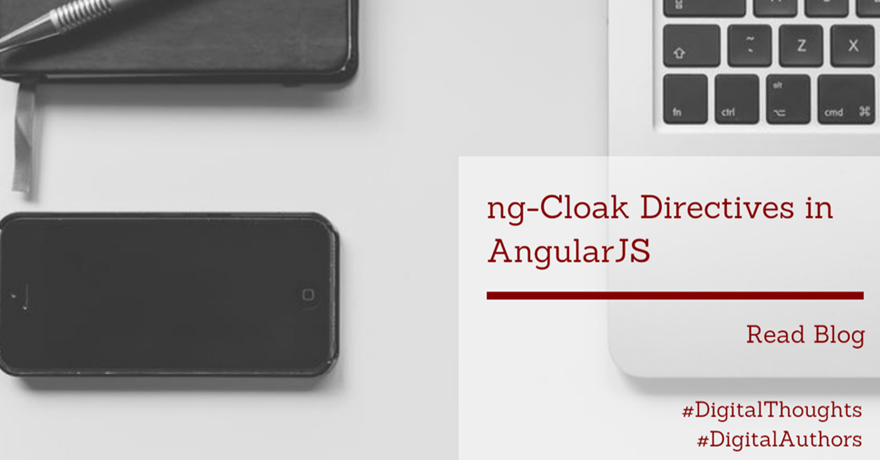ng-Cloak directives in AngularJS

Today I am going to share the interesting article about ng-Cloak directive….
Use of ng-Cloak directive
The ng-Cloak are used to prevent the un-compiled elements from being displayed and un-compiled elements can be an element that hold and wait for incoming data
<div ng-cloak>{{myCloackVar}}</div>
If myCloackVar controller is not compiled or the myCloackVar data is not populated in ng-cloak prevent {{myCloackVar}} from being displayed and display only the HTML div when the myCloackVar variable is compiled.
Example wihout using ng-cloak:
<!DOCTYPE html>
<html>
<head>
<link rel="stylesheet" href="http://getbootstrap.com/2.3.2/assets/css/bootstrap.css">
<script src="https://ajax.googleapis.com/ajax/libs/angularjs/1.2.4/angular.js"></script>
<script>
var app = angular.module("myApp", []);
app.service('getTestService', function($http) {
this.getTestService = function() {
return $http({
method: 'GET',
url:baseURL + '/SemanticWebApp/statistics';
});
};
});
app.controller("MyTestController", function($scope, getTestService) {
$scope.resultData = [];
getTestService.getTestService().then(function(data) {
var items = data.items;
angular.forEach(items, function(row) {
$scope.resultData.push({
"title": row.title
});
});
});
});
</script>
</head>
<body ng-controller="MyTestController">
<div>The ng-cloak example</div>
<div>
<div ng-repeat="testResult in resultData">
{{testResult.title}}
</div>
</div>
</body>
</html>
You might be in this way thinking but think if we are consuming a service and we have to wait for 2-5 seconds for its response,it will be awkward to show those curly braces to the customer
So to avoid this we have class name “ng-cloak” in angularJS.Below is the syntax
[ng\: cloak], [ng-cloak], [data-ng-cloak], [x-ng-cloak], .ng-cloak, .x- ng-cloak {
display: none !important; }
Example using ng-cloak:
<!DOCTYPE html>
<html>
<head>
<link rel="stylesheet" href="http://getbootstrap.com/2.3.2/assets/css/bootstrap.css">
<style>
[ng\: cloak],
[ng-cloak],
[data-ng-cloak],
[x-ng-cloak],
.ng-cloak,
.x- ng-cloak {
display: none !important;
}
</style>
<script src="https://ajax.googleapis.com/ajax/libs/angularjs/1.2.4/angular.js"></script>
<script>
var app = angular.module("myApp", []);
app.service('getTestService', function($http) {
this.getTestService = function() {
return $http({
method: 'GET',
url: baseURL + '/SemanticWebApp/statistics';
});
};
});
app.controller("MyTestController", function($scope, getTestService) {
$scope.resultData = [];
getTestService.getTestService().then(function(data) {
var items = data.items;
angular.forEach(items, function(row) {
$scope.resultData.push({
"title": row.title
});
});
});
});
</script>
</head>
<body ng-controller="MyTestController" ng-cloak>
<div>The ng-cloak example</div>
<div>
<div ng-repeat="testResult in resultData">
{{testResult.title}}
</div>
</div>
</body>
</html>
